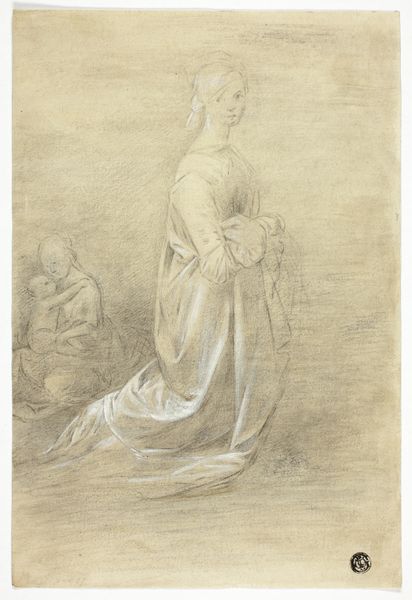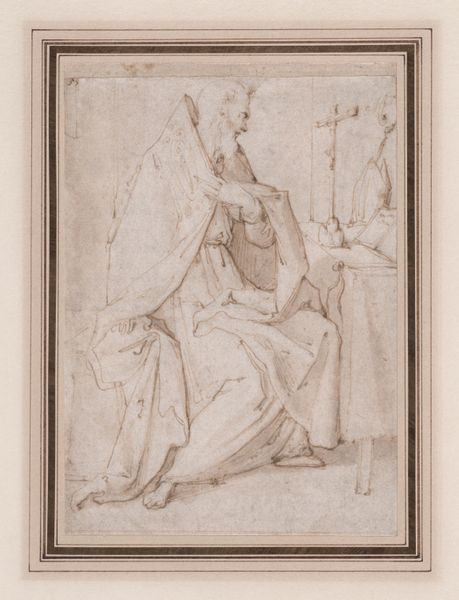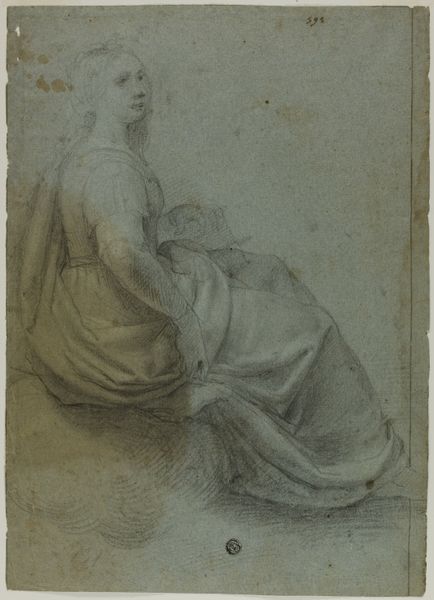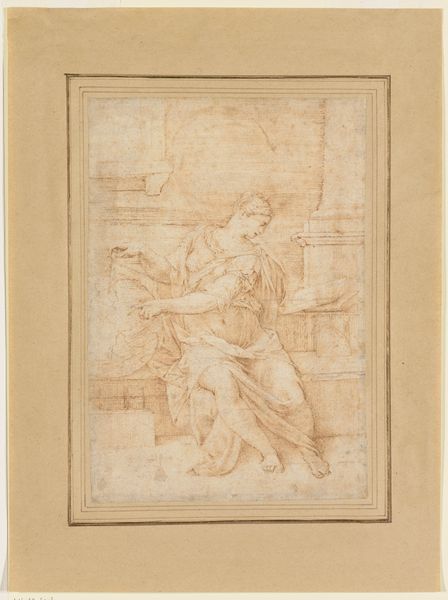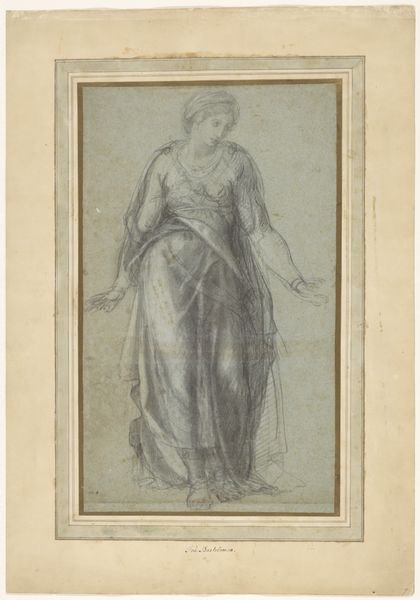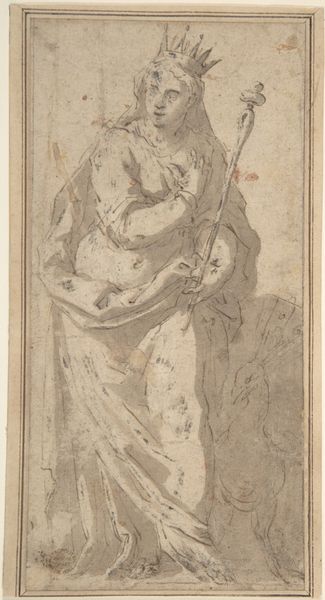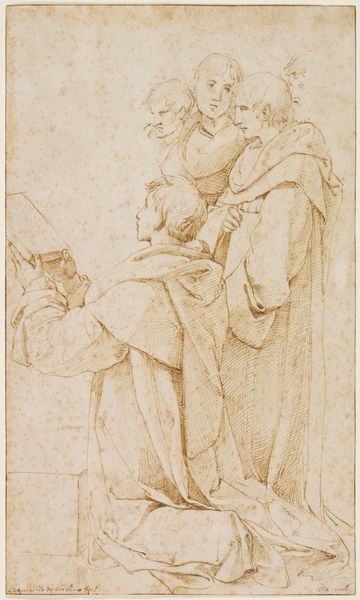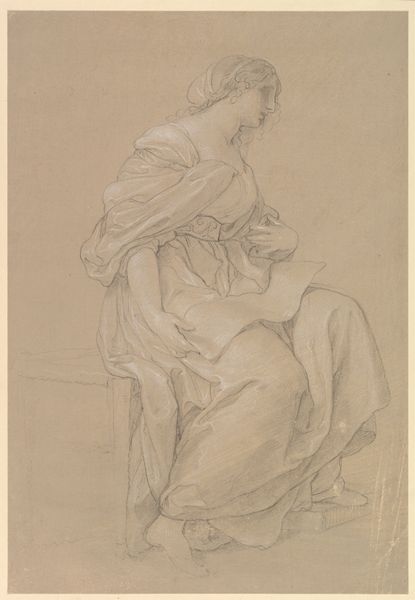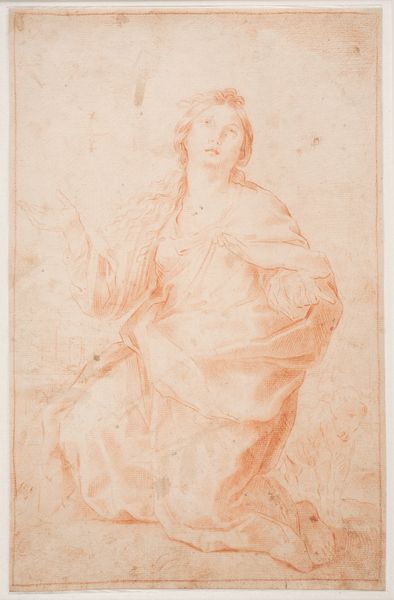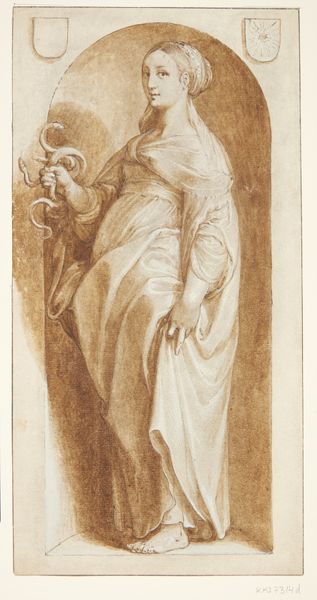
drawing, ink
#
portrait
#
drawing
#
narrative-art
#
figuration
#
11_renaissance
#
ink
#
academic-art
#
italian-renaissance
Dimensions: 14-11/16 x 10-3/8 in. (37.3 x 26.3 cm)
Copyright: Public Domain
Curator: This intriguing ink drawing is entitled "Seated Figure with Cloak and Turban." It was created sometime between 1493 and 1560 by the Italian artist Baccio Bandinelli. It now resides here at the Metropolitan Museum of Art. Editor: I'm struck by her stillness, almost a solemn repose. She seems completely self-contained, enveloped in that cloak, but still...a little weary. Curator: It’s a very human portrait. While there are classical elements evident in the figure's form and pose, it departs significantly from, say, the idealized figures one might see gracing frescoes in that era. The turban is also rather fascinating; head coverings can carry so much symbolic weight. It seems a conscious choice by Bandinelli. Editor: Definitely not a Madonna-type vibe. More like she’s pondering the grocery list while also ruling a small fiefdom, which, frankly, is more relatable to me. Is she Florentine, you think? I'm getting that vibe. Curator: Bandinelli was indeed Florentine, and served as court artist for the Medici. The city was at the forefront of the Renaissance and steeped in Humanist ideas. It is difficult to know the real identity of the sitter. This drawing certainly carries within it elements from these influences: there's this interest in anatomy but not necessarily celebrating any divine ideal. The lines themselves are full of vigor. Notice the intricate hatching and the artist's exploration of depth, particularly in the folds of the drapery. Editor: Right, there's that academic approach with the shadowing—it really gives her substance—yet the drawing overall retains a certain simplicity. I admire that, really the confident economy of line work, how he captures her weight with just these elegant marks. The slight sketch of the leg crossing her lap suggests an impatience as if her portraiture session has run too long. Curator: And such poses had cultural connotations, particularly across Europe during that time. Seated figures often held significance, indicating status, power, learning, or perhaps contemplation. It served, literally, as a form of elevation in the imagery. Editor: Yes! And the slightly smudged lines give it that touch of imperfect humanity which only serves to reinforce its appeal for me. Almost like seeing something being born before your very eyes...that fragile quality. I could happily get lost for an afternoon watching it shift and evolve in front of me. Curator: It seems this "Seated Figure" has provided us a valuable point of connection, drawing our awareness into an era of fascinating innovation through one contemplative figure. Editor: Indeed. The turbaned lady still intrigues—so much in her silence, a whole untold story brewing just beyond our gaze.
Comments
No comments
Be the first to comment and join the conversation on the ultimate creative platform.
